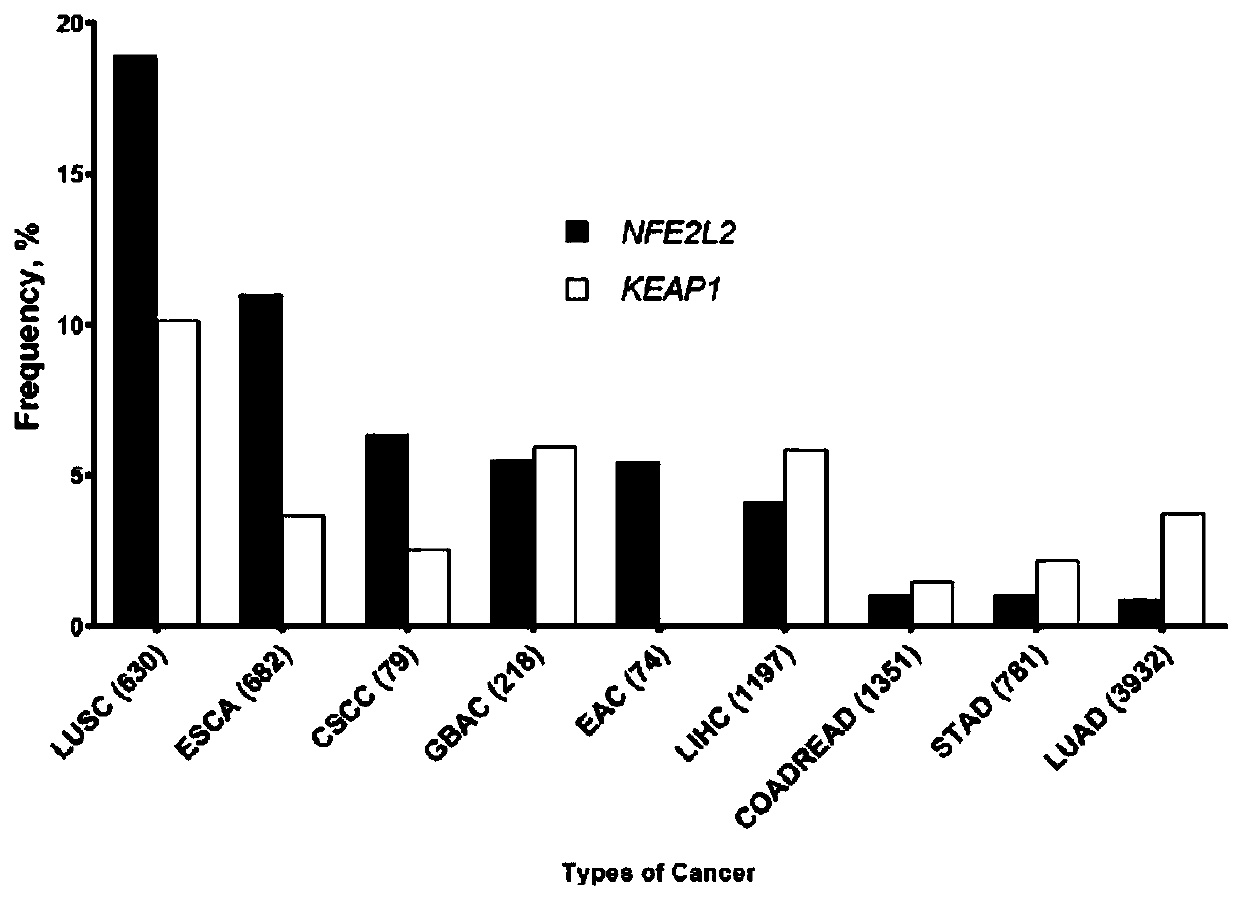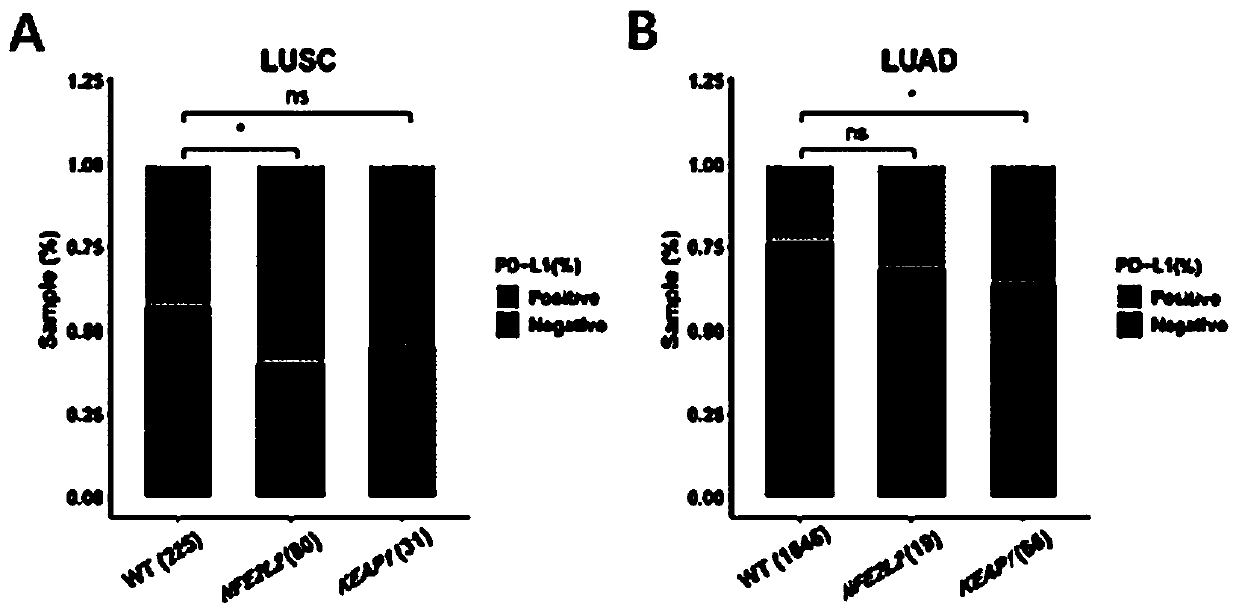Method for immunotherapy prognosis of non-small cell lung cancer (NSCLC) patients
A technology for immunotherapy and patients, applied in biochemical equipment and methods, microbial measurement/testing, etc., can solve the problems of low proportion of MSI-H in tumors, inconsistent predictive ability of immunotherapy efficacy, difficulty in establishing consensus on TMB threshold, etc. To achieve the effect of improving patient benefit
- Summary
- Abstract
- Description
- Claims
- Application Information
AI Technical Summary
Problems solved by technology
Method used
Image
Examples
Embodiment 1
[0032] To investigate the genetic characteristics of NFE2L2 and / or KEAP1 gene mutations in a Chinese NSCLC population. A total of 4637 Chinese NSCLC patients were collected, including 621 in LUSC and 4016 in LUAD. Next-generation sequencing of 450 cancer-related genes results in figure 1 As shown, NFE2L2 and / or KEAP1 mutations were highest in lung squamous cell carcinoma (LUSC) at 19.16% (NFE2L2) and 10.31% (KEAP1), respectively. Compared with previous reports, NFE2L2 (0.89%) and KEAP1 (3.74%) were mutated at lower frequencies in lung adenocarcinoma (LUAD). We observed an amplification frequency of NFE2L2 in the entire cancer database as high as 19.2% (80 out of 417), suggesting that the NRF2 pathway is activated in cancer. Among them, the amplification frequency of NFE2L2 in non-small cell lung cancer was 19.1% (33 out of 173). In addition, we analyzed the distribution of somatic mutations on the NFE2L2 and KEAP1 protein schematics. Consistent with previous reports, mutat...
Embodiment 2
[0034] TMB values obtained by the NGS algorithm, counts include the total number of somatic mutations encoding SNVs and short indels. Driver mutations and known germline rotations in the dbSNP database were not calculated. TMB was calculated by dividing the total number of mutations counted by the size of the coding region. The result is as figure 2 shown, in LUSC and LUAD, NFE2L2 and / or KEAP1 mutations were significantly associated with higher TMB values, although the two genes had different mutation frequencies.
Embodiment 3
[0036] To determine whether NFE2L2 and / or KEAP1 mutations increase PD-L1 expression, the correlation of LUSC, LUAD was assessed using PD-L1 immunohistochemical staining in NSCLC patients. PD-L1 expression status can be estimated by IHC staining of FFPE tissue sections with anti-PD-L1 antibodies (clone 28-8; Cat#ab205921; Abcam or clone 22C3; Cat#M3653; Dako). Abcam Universal HIER Antigen Recovery Reagent is used for antigen recovery. Nonspecific binding was blocked with DakoEnVision FLEX peroxidase blocking reagent. Other staining was mainly performed with Dako series reagents (Cat#K8002; Dako). A sample was considered positive for PD-L1 if the percentage of stained cells was ≥1%. The results showed that NFE2L2 mutation was associated with increased PD-L1 expression in LUSC, see image 3 A. In contrast, no clear association was observed in the KEAP1 mutant subset. The opposite is true for LUAD, see image 3 B, Only KEAP1 mutations are associated with increased PD-L1 expr...
PUM
 Login to View More
Login to View More Abstract
Description
Claims
Application Information
 Login to View More
Login to View More - R&D
- Intellectual Property
- Life Sciences
- Materials
- Tech Scout
- Unparalleled Data Quality
- Higher Quality Content
- 60% Fewer Hallucinations
Browse by: Latest US Patents, China's latest patents, Technical Efficacy Thesaurus, Application Domain, Technology Topic, Popular Technical Reports.
© 2025 PatSnap. All rights reserved.Legal|Privacy policy|Modern Slavery Act Transparency Statement|Sitemap|About US| Contact US: help@patsnap.com



